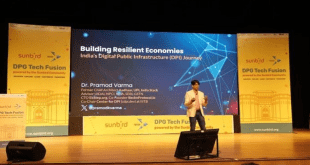Electricity has become such an inseparable part of our lives that it’s almost impossible to imagine life without it. As the supply is usually 24/7, we hardly ever care about its importance. However, at times, there are widespread power outages, covering entire cities, states and even the entire country. In these situations, millions of households are forced to live without electricity.
So, how do these power outages or power grid failures occur in the first place? Haven’t we developed advanced systems that can eliminate the possibility of power grid failures? Well, large scale power grid failures are rare, but they do occur across the globe. The answer to what is a power grid failure is simply a breakdown in the power supply system. Power grid failure can occur due to breakdown in power generation, power transmission or power distribution. To better understand what is power grid failure, let’s take a look at some common causes that make it happen.
Natural disasters – These include factors like earthquakes, floods, tsunami, avalanches, landslides, cyclone, cold wave, tornadoes, ice storms, etc. In such cases, the entire supply system can be affected including power generation and distribution. For example, a cold wave can shut down power plants and damage transmission lines. Power grid failures caused by natural disasters are often difficult to fix and may require several days to restore the system to normal.
Human error – Present day power grid systems are designed to work in an autonomous manner with limited human intervention. These systems can balance power supply and demand in a seamless manner. However, there may be times when human intervention may become necessary. If there’s human error in such situations, it can lead to a power grid failure.
Software bug – Automated power grid systems are backed by advanced software programs that can take preventive action to fix anomalies in the power grid. However, new situations continue to emerge. It is possible that a previously unknown problem occurs, which could not be resolved by the software system. In such situations, the software may not be able to take the right decision. In the absence of timely human intervention, such developments can lead to grid failure.
Terror and cyber-attacks – Power grids are the lifeline of nations, which makes them a target for terror and cyber-attacks. In 2015, Ukrainian power grid was breached by cyber attackers, resulting in a massive power outage. In a connected world, critical systems such as power grids have become prone to cyber threats.
As grid failures can cause significant financial losses and unimaginable human suffering, it is imperative that power grid managers work proactively to identify potential problems and threats. They need to create back-up plans for all possible contingencies that may occur in the future. It’s also necessary to have dedicated tech teams that can effectively tackle the growing threat of cyber-attacks. Regular upgrade of software systems and physical infrastructure are among other things that can help reduce the risk of grid failure.
 Newspatrolling.com News cum Content Syndication Portal Online
Newspatrolling.com News cum Content Syndication Portal Online






